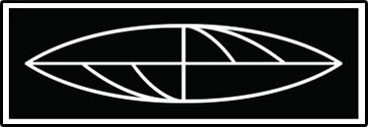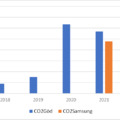By Andrea Éltető
Over the past year, battery waste has been in the Hungarian news mostly because of illegally dumped discarded batteries. Iklad, Abasár, Mocsa, Salgótarján, Sárbogárd – in these cities thousands of tons of hazardous batteries were dumped in abandoned buildings and old factories, in an irregular way. Despite calls from the authorities, they are still not being removed, regardless of polluting the air and soil. For example, on 28 March 2024, the Heves County Government Office issued a new fine (HE/HGO/00065-45/2024) and wrote: “the storage of large quantities of hazardous waste without a permit and without official control has resulted in a risk to the environment. Furthermore, a further thirty deadlines for voluntary compliance after the initial deadline for compliance had passed without result and the fine was imposed for the thirty-first time.” Damage to discarded batteries results in large amounts of lithium emissions (among others) into the environment, which can be a source of serious environmental and health problems. Lithium inhibits cell viability and the division of human heart muscle cells, is harmful to skin and eyes, carcinogenic and flammable.
Visible and smelly waste batteries, however, make up only a fraction of the hazardous waste from battery production, and there are many other less noticeable types of waste. For example, the table shows that the largest item (about 80% of hazardous waste) in Samsung SDI is “aqueous liquid waste containing hazardous substances.”
Main hazardous waste generated at Samsung SDI (over 1,000 tonnes), kg
|
HAK code |
Name |
2018 |
2019 |
2020 |
2021 |
2022 |
|
15 01 10* |
contaminated with dangerous substances packaging waste |
217,347 |
850,328 |
1,305,008 |
2,060,460 |
2,677,145 |
|
16 10 01* |
aqueous containing dangerous substances liquid waste |
2,479,823 |
16,691,965 |
19,868,005 |
27,739,272 |
27,971,360 |
|
19 02 05* |
hazardous waste from physico-chemical treatment sludge containing dangerous substances |
275,830 |
437,440 |
1,020,720 |
1,383,460 |
1,559,680 |
|
19 08 13* |
from other treatment of industrial waste water, hazardous substances |
- |
- |
- |
3,993,140 |
2,537,280 |
Source: 'Samsung SDI Waste Management Plan 2023-2027', October 2023, page 5.
Of this28,000 tonnes, about 20 percent is a suspension containing hazardous solvents (N-methyl-2-pyrrolidone, NMP) and even cathode-side substances such as cobalt and nickel. (The irritating and toxic effects of NMP have been much discussed in connection with the Göd plant contamination. Nickel damages the kidneys, lungs, nervous system, cobalt damages the immune system, it is carcinogenic and accumulates in the body.) This suspension cannot be recycled for the time being, and according to the documents, it is given to external waste treatment companies. However, it is not clear from the documentation where these waste handlers will take this material and what they will do with it. In other words, from one cell factory alone, some 5 600 tonnes of highly toxic waste are being discharged each year without any known fate.
More than half of the “aqueous liquid waste” is aqueous NMP, which is regenerated by the South Korean-owned company JWH (Jaewon) in Komárom. JWH, which recycles 60 tonnes of NMP per day, did not need an environmental assessment (as neither was it necessary for Samsung, SK for years) although according to Annex 2 of Government Decree 314/2005 (25.12.2005), activities above 200 tonnes/year of solvent use would have required a unified environmental permit. In addition, the authorities do not investigate the technological, capacity or transport-related disaster risks of the regeneration process of aqueous NMP waste, nor do they control the technologies used.
With the arrival of Chinese cell factories, the amount of NMP used and transported will increase dramatically. CATL's permits in Debrecen all state that 2000 tonnes of NMP “fresh solvent” are used per year. Only a deficiency addition document (35900/8170-1/2022) shows that 48 300 tonnes of NMP will be “in circulation” at the CATL plant when the cells are produced, more than 90% of which will be regenerated and recycled (but all of it will be fed into the system at the beginning). The permits also show that in the first year of operation CATL will not carry out the NMP regeneration itself, but will outsource it to an “external supplier”, it is not known to whom and where. The battery factories already in operation and CATL’s use of NMP in Phase 1 will total around 90,000 tonnes, and the Eve Power and Sunwoda cell factories will also use thousands of tonnes of NMP, as well as other industries using the solvent in smaller batches. For comparison, in 2018, there were 30 thousand tonnes of NMP in Europe as a whole.
Other large quantities of hazardous waste include contaminated packaging waste, but also contaminated protective equipment and filters. In addition, there is a significant amount of toxic sludge from wastewater pre-treatment and technology, also contaminated with toxic metals, which is also transported by external companies. Samsung SDI's wastewater treatment could be seriously problematic, as a Greenpeace investigation found NMP in the water spilt in February 2024 in the fields of Göd (the city where the factory is located). The waterworks company report proved that this was municipal (!) wastewater coming from Samsung, not even industrial (but NMP should not be found in that either). The environmental permit issued to Samsung SDI in December 2023 (which was legally challenged by the NGO Göd-Ért, precisely partly because of the problems with the wastewater treatment) states in bold letters that “the discharge of pollutants into surface water, groundwater or geological media is prohibited, even in the event of an accident.” (page 12). Moreover, the Pest County Government Office has issued Samsung SDI’ s environmental permit despite that the waterworks company does not have the capacity to treat half of the wastewater produced in the factory and that it is not known what will happen to it. In the meantime, on 24 April, the Budapest District Court ordered the suspensive effect against the environmental permit of the Samsung battery factory in Göd on the basis of an immediate application for legal protection by the civil association (the company should be ordered to cease its activities temporarily until the end of the case, but this order has not come).
It is also possible that a consignment of waste may not be known to be hazardous. In the Mocsa case, waste batteries with a falsified classification were found in the warehouse of Éltex Ltd. (a waste handling company). Samsung SDI was also allowed by the Government Office to reclassify its scrap batteries from hazardous (HAK 16 02 15*) to non-hazardous (HAK 16 06 05), so that in 2022, 2278 tonnes of scrap batteries could travel anywhere as (on paper) non-dangerous goods (Samsung SDI Full Review Document 2023, p. 203). So, several shipments of waste batteries, NMP tankers, toxic sludge and nickel-manganese-cobalt dust for cathode production are ‘travelling’ on our roads... Dust is “black mass” too, which is the toxic end product of battery recycling. It was produced in large quantities at South Korean SungEel’s plants, which were temporarily closed due to serious irregularities. There is no suitable hydrometallurgical technology in Hungary (and hardly any in Europe) for the further processing of this powder and the recovery of lithium, cobalt and manganese from it. In Asia, however, there is such technology, and the Pest County Government Office has issued decisions (PE/KTFO/308-2/2024 and 42-6/2024) authorising SungEel to send 240 and 400 shipments of black powder through the border by road and water to South Korea (a total of 11400 tonnes) by 30 November this year. The hazardous battery waste produced in Hungary therefore passes in large quantities through many other countries.
This article originally appeared in Hungarian. The hyperlinks to the references can be found in the Hungarian version.






